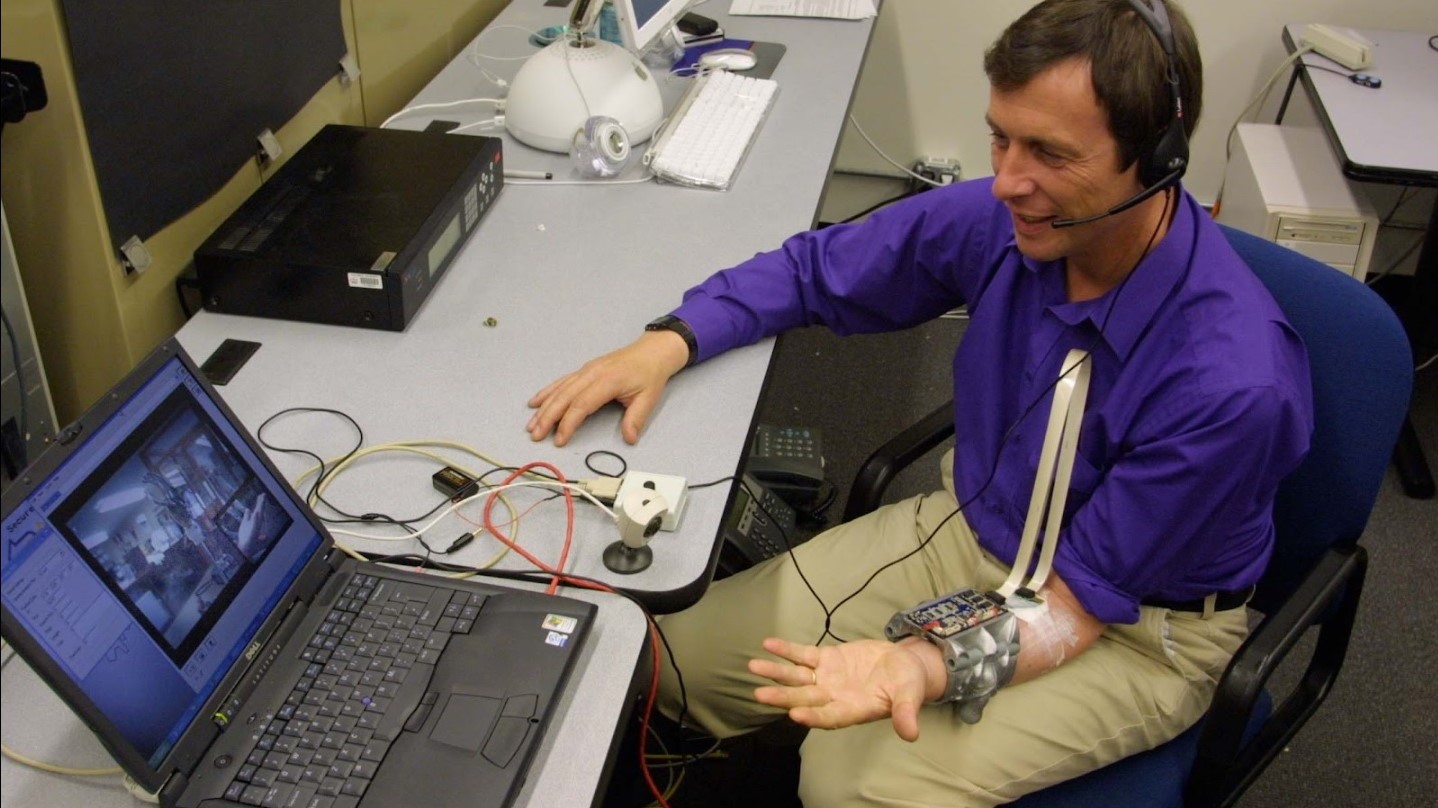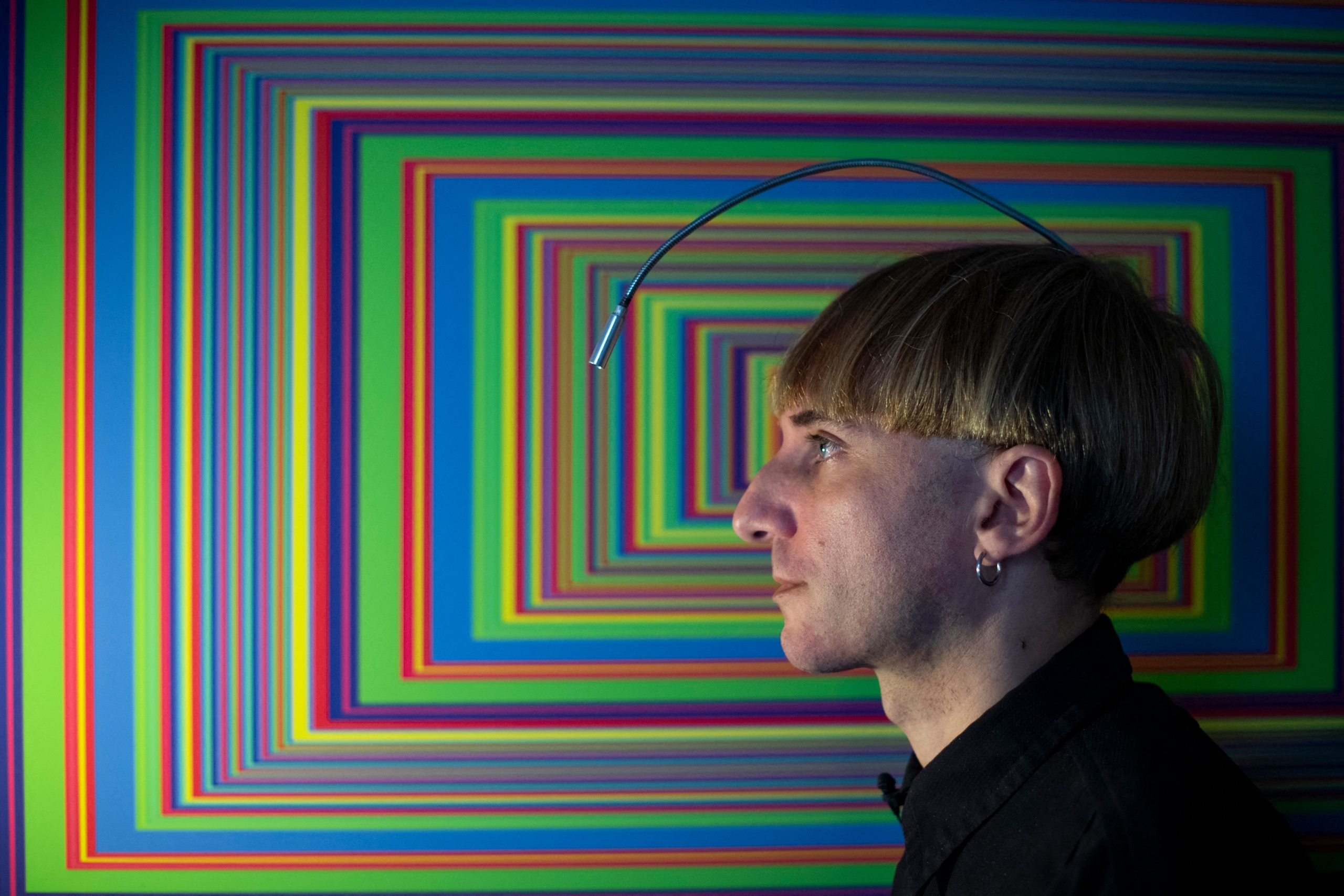Who was the first cyborg?
The first cyborg experiments were done in the name of science.
Fictional cyborgs are found everywhere, from the silver screen to comics and novels. But who was the first real-life bionic human?
To answer this question, let's direct our attention to Kevin Warwick, who has a scar on his left forearm from where surgeons fired 100 silicon spikes, tipped with platinum electrodes, directly into his nervous system. These spikes allowed his body to receive outside electronic signals — for instance, from a computer — and transmit them out again.
This operation arguably made Warwick the first cyborg in 2002, by fusing his body with technology to extend his regular human abilities into the realm of science fiction. With the implant, he could be wired up to computers, control robots on other continents via the internet and sense ultrasonic sound waves, just like a bat can.
"It's like a superpower suddenly your brain can control," Warwick, an emeritus professor of cybernetics at the University of Reading and Coventry University in the U.K., told Live Science.
Related: Will humans ever be immortal?
The word "cyborg" was coined in 1960 by neurophysiologist and engineer Manfred Clynes, although cyborg-like creatures have appeared in science fiction since the 1920s, according to Oxford Reference. The meaning of cyborg is broad and variable depending on the source.
Merriam-Webster defines a cyborg as a bionic human, with "bionic" meaning biological capabilities or performance enhanced by electronic or electromechanical devices. The first body-worn electronic hearing aids were developed in the early 20th century, according to the Bernard Becker Medical Library at Washington University School of Medicine in St. Louis. But even though an electronic hearing aid can help those with hearing impairments, it doesn't give them extra, superhuman capabilities, so it's debatable whether it's accurate to label people who wear hearing aids as bionic humans. The same goes for other medical tech marvels, such as pacemakers, which are implanted electrical devices that help the heart beat.
Get the world’s most fascinating discoveries delivered straight to your inbox.
Warwick got his first implant in 1998 — a simple Radio Frequency Identification (RFID) chip placed under the skin in his arm. Computers in his University of Reading lab were connected to antennas that detected radio waves transmitted by the chip so the computers could monitor and perform tasks for Warwick as he approached, such as opening electronic doors. But he thinks it was the 2002 implant that earned him the moniker of "cyborg," because the implant was integrated into his body's nervous system and extended what human biology was capable of.
Fibrous tissue grew around the implant, securing it into place within his arm, meaning that the tissue accepted the implant into the body. The implant's spikes could detect the signals passing through his nervous system that a computer wired up to the implant deciphered in real time. The computer could also send signals of its own back into Warwick's nervous system via the spikes. This bridge meant that the technology connected to Warwick essentially became a part of him. "But also, it gave me abilities that I simply didn't have as a human," Warwick said.
For instance, he moved a robot hand in the U.K. from New York City, just as if it were his hand. So, the signals his brain sent to his hand commanding it to close into a fist were interpreted by a computer wired to his implant and sent across the world, via the internet, to another computer connected to the robot hand, so that the robot hand received a command to close, too. The metal hand had sensors that sent signals back across the internet and into Warwick's plugged in nervous system, which his brain received as pulses. The pulses were more frequent the stronger the hand gripped. "I could feel what the hand was feeling," he said. "That felt enormously powerful."
Related: What if our hands had 6 fingers?
Controlling the robot hand was one of several experiments Warwick performed while living with the implant for about three months. He acquired a bat-like sense by connecting his implant to a modified baseball cap that had ultrasonic sensors attached to it. The sensors sent signals into his nervous system as pulses, which got more frequent as different objects moved closer to him.
His biggest "eureka moment" happened when he connected his nervous system with the nervous system of his wife, Irena Warwick, after she had electrodes pushed into the nerves in her arm, too. He couldn't see what she was doing, but when she opened and closed her hand, he could feel it. Like with the robot arm, Warwick received pulses in his nervous system to signal what Irena was doing.
The Warwicks aren't the only ones with a prominent place in cyborg history. Neil Harbisson became the world's first cyborg to be legally recognized by a government in 2004 after the U.K. government permitted him to wear his antenna, which allows him to "hear" color, in a passport photo, according to CNN.
Harbisson, an artist and cyborg activist, was born color-blind; the antenna detects colors for him and translates them into sounds he can hear, with each color assigned its own note. The tech, which Harbisson had implanted into his skull, even allows him to hear some colors humans can't see, such as infrared. Unlike Warwick's 2002 implant that was removed after his experiments, Harbisson's antenna implant is a permanent fixture that he's been wearing since 2004.
There is, however, one cyborg definition that demands more than an implant or two. According to Oxford Reference, a cyborg is a hybrid: half human and half machine. Scientist Peter Scott-Morgan is well on his way to achieving this by using artificial intelligence (AI) and robotics to overcome his motor neuron disease, such as by connecting his windpipe to an external ventilator to help him breathe and using a synthetic voice to speak, like the late theoretical physicist Stephen Hawking. Unlike Hawking, who used cheek twitches to navigate a computer and select what words to say, Scott-Morgan plans to control his tech through implants connected to his brain and is working on developing a self-driving robotic exoskeleton stronger than his body ever was, according to "Peter: The Human Cyborg," a 2020 documentary following his progress.
Warwick has no disability to overcome and has retired from upgrading his body with technology. He won't rule out one more implant, but he's disappointed with the slow scientific progress humans have made with cyborgs since he went under the knife. According to Warwick, his cyborg experiments didn't catch fire academically, and the work was never fully accepted by his peers.
He expected lots of people would have implants in their brains by now, communicating just by thinking to each other. "We don't have anybody doing that, which is really disappointing," Warwick said.
Originally published on Live Science.

Patrick Pester is the trending news writer at Live Science. His work has appeared on other science websites, such as BBC Science Focus and Scientific American. Patrick retrained as a journalist after spending his early career working in zoos and wildlife conservation. He was awarded the Master's Excellence Scholarship to study at Cardiff University where he completed a master's degree in international journalism. He also has a second master's degree in biodiversity, evolution and conservation in action from Middlesex University London. When he isn't writing news, Patrick investigates the sale of human remains.





